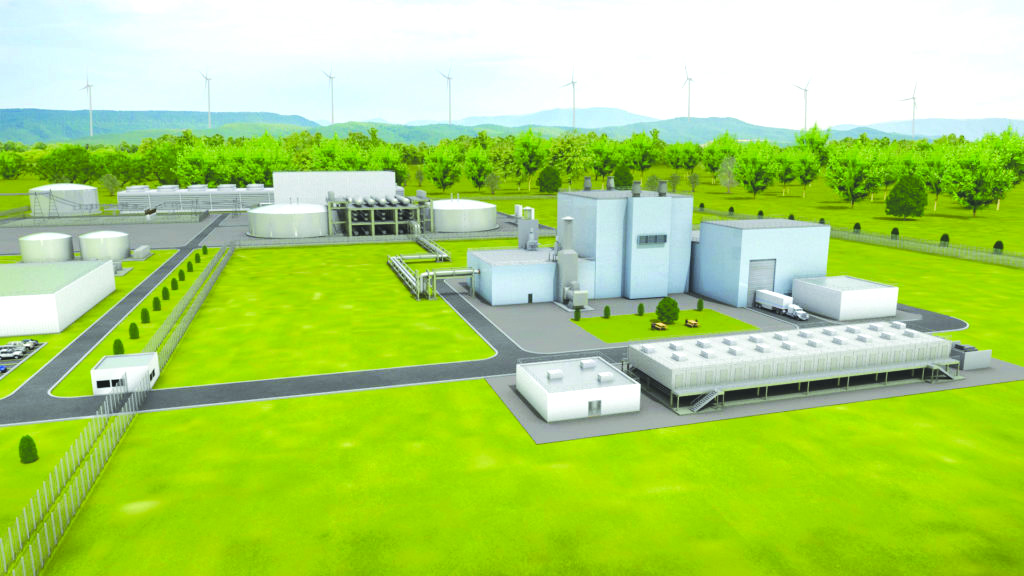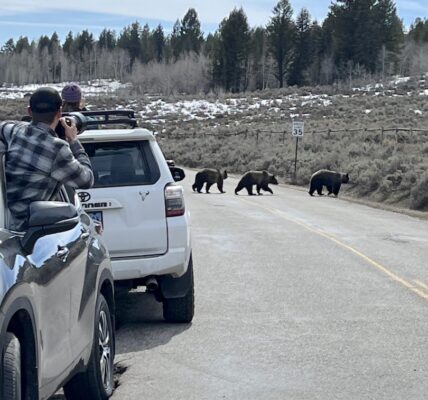
By Kayne Pyatt
Kemmerer Gazette
Via- Wyoming News Exchange
KEMMERER — The Wyoming Energy Authority and the University of Wyoming School of Energy Resources presented a recent webinar titled “Advanced Nuclear 101” to provide expert information and to answer questions involving the proposed Natrium nuclear plant to be built near Kemmerer.
Expert testimony was provided by Dr. Steve Aumeier, senior advisor at the Idaho National Laboratory; Dr. Josh Jarrell, manager, Used Fuel Management Department at the Idaho National Laboratory; and Dr. Todd Allen, professor of engineering and chair of the Nuclear and Radiology Department at the University of Michigan.
Dr. Aumeier began with his perspective on nuclear energy in Wyoming.
“We are moving forward in a much different way than we did 10 — even 20 — years ago, with nuclear energy,” Aumeier stated. “We have been using nuclear energy for 65-plus years in the U.S. and the role of the national laboratories has been testing and validation for the federal government. The new advanced reactors are becoming smaller, integrated, modular and safer based on decades of research and development at the Department of Energy (DOE) National Laboratories.”
Aumeier has years of experience with nuclear power, having served on the first submarine powered by nuclear energy; lived in the first U.S. city powered by the first nuclear power plant at the Idaho National Laboratory; worked on the first mobile nuclear power plant for the U.S. Army demonstration of a self-sustaining fuel system.
Aumeier explained the different sizes of reactors. Small reactors use molten fluoride or chloride as a coolant and average 1 to 20 mw (megawatts) which is used for baseload energy, heat, and developing hydrogen products. There is currently none in the U.S. The first to come will be in 2029.
Micro-reactors will be used by 2025 to provide power in remote locations, for the military, space missions and disaster relief. They take less than an acre of space.
The medium-size reactor uses liquid sodium or lead as a coolant, averages 20 to 300 mw and is used in a medium-sized market area.
Large reactors are gas cooled and average 300 to 1,000-plus mw. He said that the large size reactor is efficient and matches a rapidly growing energy demand. There are currently 95 large reactors operating in the U.S. and most were built between the 1950s and the 1980s.
“All of the different reactors have a history of safety,” Aumeier said. “Nuclear clean energy can transform the economic paradigm in Wyoming. It is a power source embedded in advanced industrial production. Micronuclear leads to the use of steel, new chemical processes, hydrogen for vehicles and industry, electricity, manufacturing, fabrication and can lead to advanced exporting.”
Aumeier encouraged the residents and public officials of Wyoming to engage with the university and energy authorities to plan and engage in regulatory oversight for excellence in operations including the creation of a number of jobs; a supply chain, the value chain, and development of global markets.
The community, Aumeier said, should build partnerships and have short- and long-term plans for the fuel cycle. He encouraged anyone with questions to consider the scientific facts and lean on the 70 years of knowledge the laboratories have gained.
The storage of “spent radioactive fuel” from nuclear reactors has raised concerns and questions from some environmental groups so Dr. Jarrell, who manages spent nuclear fuel at the Idaho National Laboratories, covered all aspects of uranium used in nuclear reactors from harvesting and enrichment to the disposal and storing of the “spent fuel.”
Jarrell explained there are three types of uranium oxide mining in Wyoming: the open pit mine, underground mine, and the in-situ leach mine. In the last five years, there has been almost zero production at any of those mines.
In order for the uranium oxide to be used in a nuclear reactor, Jarrell said, it first needs to be at least 5% enriched through centrifuge or diffusion. Once enriched it is changed back to an oxide and formed into a final feed material for a nuclear reactor.
After approximately five years of use, the fuel is spent, is no longer usable and is now radioactive. It is moved to a shielded area where it is cooled in pools for three to five years and then moved to dry storage — concrete canisters lined with stainless steel. These canisters can then be transported safely on a rail car in a more than 100-ton structure holding them.
“We have been transporting these canisters for several decades now without any incidents,” Jarrell said. “It is a very safe and robust system of transportation. The U.S. does not have any active storage sites so canisters are stored on site currently. We are in the process of looking for solutions and our goal is to eventually move the canisters to a permanent repository — private or with the DOE.”
There has been international consensus, Jarrell said, that a deep geological disposal is the answer for permanent isolation of spent fuel and other long-lived radioactive wastes and that several countries in Europe are moving toward it.
He added that the advanced reactors have different spent-fuel management challenges as their spent fuel is from different materials.
In the future, Jarrell said, there could be the development of a closed fuel cycle of reprocessing and recycling but they would still need a system for storage and disposal.
Dr. Allen, chair of Nuclear and Radiology at the University of Michigan, focused on what Americans value: energy, pure water, clean sanitation and more. Americans want clean, affordable, resilient and equitable energy, he said.
“We need to reimagine energy,” Allen said. “It is an amazing transition but complicated. We are using wind and solar, computer technology and nuclear. We want emissions reductions, less carbon and particulates and cleaner systems.”
Relying on a single fuel for energy brings with it risk, Allen continued, but through the use of transportation and dual-fuel capability the risk is reduced. Jobs and supply chains matter, and the ability to influence international guidelines regarding safety and other regulations is important. There are lots of values and choices centered around energy, Allen said, and the energy industry and environmental agencies need to work together.
Allen focused on what the communities can do to capitalize on the opportunities resulting from the building of the advanced Natrium nuclear reactor in Kemmerer.
“There is a synergy between the reactor plant and how you use it,” Allen said. “You need to think about co-located businesses that can use the energy to make by-products, such as hydrogen, for example. The possibilities are endless, such as a training center for high tech jobs, supply chain opportunities, and spin-off technologies and manufacturing.”
The webinar ended with answering questions sent in via email by listeners.
The first questions dealt with questions and concerns about storage of the spent fuel and was answered by Dr. Jarrell who had already discussed the options.
Jarrell said “The community needs to think about where on-site the spent fuel will be stored and needs an advance plan.”
Other questions and concerns involved topics that had to some extent already been covered in the presentations by the three experts concerning how much water would be used; pollution of the water; the history of environmental impact on low-income peoples; the economic costs; safety; and the timeline for construction and operation.
Answers included the fact that the cost for nuclear-produced energy for heat and power proved to be far better than from any other source; products that can be made from that low emission energy add another financial benefit; and the pollution of water from open pit mining had been a problem and left a lot of clean-up concerns.
A final question had to do with the recent report published by the Union of Concerned Scientists regarding the Natrium Nuclear Reactor and its proven safety.
All three experts responded similarly, that the experience on pool reactors has been very good and they have been shown to be very safe.
Regarding a concern about safety from terrorist acts, the response was that non-proliferation is to be taken seriously and preparations need to be made. They added that the U.S. has more control over nuclear technology today. They encouraged the listeners to look at all of the scientific data and information provided concerning the natrium reactor.
Jarrell ended by saying, “Our goal for this webinar was to be transparent, maintain a neutral opinion, and be science based.”
Aumeier added, “It is important to have an ongoing dialogue about what the community can get and what they can do.”






